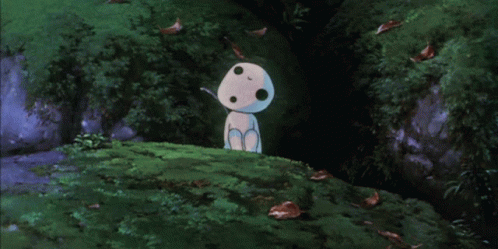Dear Reader,
I got the oddest comment from a friend the other day. “This is your kind of epidemic. The rest of the world is going stir-crazy because they’re cooped up at home while you’re basically just living your normal life, just with zero pressure to step outside. Dude, this is your dream!” he said to me.
Just for the record, a viral flu with a mortality rate of approximately 1% that is projected to wipe out millions of people is not my dream. (Especially since someone from the next street reportedly tested positive for Sars-Cov-2.)
That said, he did have a point when he said my normal life involves staying in, which is why when the conversation about social distancing started here in India, I was a bit perplexed about why it was being posed as a challenge. With the millions of books that are sitting there unread, what do you mean you don’t know what to do with your day now that you’ve watched everything on Netflix and Prime? Also, how have you watched everything? Teach me o great one!

(Tangent: The Studio Ghibli films on Netflix are such. a. joy.)
Of course, the strain of social distancing and home quarantine isn’t necessarily that one has nothing to do, but that reality is scary and it’s difficult to find things that are compelling enough to distract you from the fact that a disease without cure may literally be in the air.
Last week, the Women Writers Fest was asking people for epidemic/pandemic-themed book recommendations, which got me thinking about the psychology of those who would like to retreat into fiction about an epidemic while there is a pandemic in the real world (which I won’t bore you with). It also led to this little list of must-reads and why-not-reads (by which I mean books/ articles you wouldn’t usually pick up, but hey, you’re house-bound and there really isn’t much to do, so why the hell not…).
It’s only been a few months, but this strain of coronavirus has already inspired some excellent journalistic writing.
This profile of Wuhan-based virologist Shi Zenli is fantastic, and not just because she’s known as China’s “batwoman”. There are an estimated 5,000 coronavirus strains out there, which means epidemics are likely to become a more regular feature in our lives than they already are.
In “How Coronavirus Could Take Over Your Body”, the writer traces the arc of a patient from coming in contact with the virus to ending up attached to a ventilator. It’s terrifying how innocuous, everyday actions are fraught with danger because this virus is within touching distance. This article, which documents the very different ways two women reacted to Covid-19, is another moving read and the writing is far more restrained than the other article’s (which is not surprising given the second one is from a newspaper and the first is from a magazine).
A quick read: National Geographic broke many hearts when it revealed those Disney-esque stories about dolphins returning to the canals of Venice were fake news.
Yan Lianke is a professor of Chinese culture and on February 21, he gave an e-lecture, which has been translated for our reading pleasure here. It’s a long essay about memory, culture and ideas of community and identity. The translation is so beautiful, I can only imagine how mesmerising it must have been to hear this in its original.
It hadn’t struck me that the spread of Covid-19 may have a social impact in terms of women’s rights and the roles that they’re likely to be restricted to in these times of pandemic. Despite initial research suggesting the disease affects women less severely, its non-medical impact would be to disrupt women’s lives in a way that would be devastating. Naturally, the majority of men would not be impacted in the same way. Hell, they may even benefit from it.

If you’re in the mood for fiction, the good news is that a lot of writers seem to be interested in diseases that can wipe out entire populations.
Station Eleven: More than 99% of the human population has been wiped out by the “Georgia flu”. Television stations have become defunct, air travel has shut down…yes, the resemblance is striking. Technically, Station Eleven is science fiction (complete with the possibility of the world coming to an end and a chap who calls himself the Prophet), but it’s also elegant, literary and profoundly thought-provoking.
Beauty Salon: This is a sliver of a book in terms of size — just 60-odd pages — but what a mad, weird and eloquent study of survival. The Terminal used to be a beauty salon for women, but it’s now a hospice for men who are dying because a mysterious plague has descended upon the city and it afflicts only men.
The Andromeda Strain: Extraterrestrial microbe, bombs, secret labs — there’s something so satisfying about the relentless pace and energy of well-written popular fiction. This one is unabashedly science fiction and it takes that “science” bit rather seriously. Superbly fun and what is particularly applause-worthy is that it doesn’t feel terribly dated despite a publication date of 1969. At least it didn’t when I read it back in the early 2000s.
One Hundred Years of Solitude: Admittedly, the plague is not the central theme of this incredible novel, but it is among the most memorable (ha!) and heartbreaking sections of One Hundred Years… . The plague comes to Macondo, where the novel is set, with a little orphan girl and its first symptom is insomnia, followed by the loss of memory. With the amnesia comes a slow, inexorable loss of identity and Marquez was at his evocative best when he wrote of Macondo’s determined but futile resistance to the plague.
Bombay Fever: A killer disease is sweeping through Mumbai and it begins with a dead body in a temple and a journalist who returns to Mumbai with a cough. This mystery disease was inspired by the Spanish flu. As terrifying as the disease is how the social media, the government and the healthcare systems respond to it. This is one of those books that you finish in a setting and then feel vaguely relieved that it was fiction. Until you remember that you’re in social isolation because of a pandemic.
The Quarantine Papers: There are two epidemics in The Quarantine Papers. One is the plague that swept through Bombay in the 19th century (and physically changed the city because of the neighbourhoods and roads that were constructed at the time, with the hope of tackling the contagion) and the other is communal hatred. The book time travels between Mumbai in 1992, after the Babri Masjid is torn down, to Bombay during the plague. Solidly good read.
The Companions: During an epidemic, a tech company called Metis develops the technology to “download” the brain into a robotic body. These are the companions — the dead who are brought to half-life — and they are programmed to remain docile and not harm the living. One of them, Lilac, remembers she was murdered and she sets off to find her murderer. I haven’t finished reading this one, but it’s pretty damn good (and strange) so far.
In other news, author Samit Basu has started a newsletter. His new book Chosen Spiritspromises to be an excellent read (and I’m not just saying this because he’s a good friend). You should subscribe to his newsletter because he’s very funny and somehow finds the time to read, watch things, tweet responsibly and write thoroughly engrossing books. His newsletter has news, recommendations and ducks. What more could you want?
Finally, for those of you who listen to The Lit Pickers, you’ll know that Supriya and I are hoping to be able to record a last episode in which we answer any questions our listeners may have on books, reading and writing. If you’ve got a question, send it over. If all this is coming as news to you, allow me to point you to the episode on the Great Mughals.

In the meantime, be like Jodha(a) and Akbar. Maintain your distance, wash hands and say a prayer that we’ll come out of this as painlessly as is possible.
Thanks for reading and stay well. Dear Reader will be back soon.


